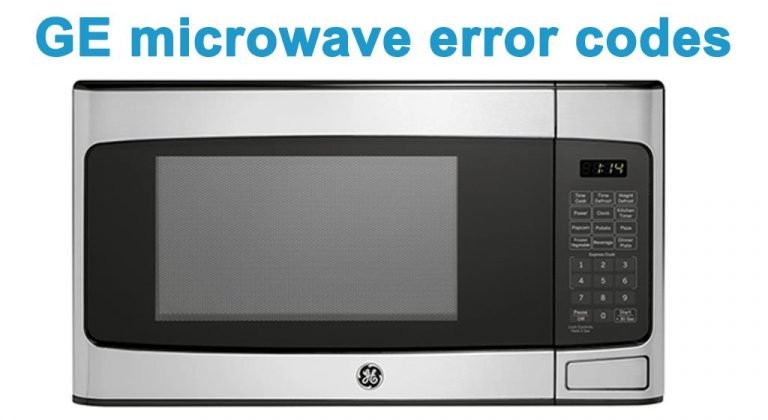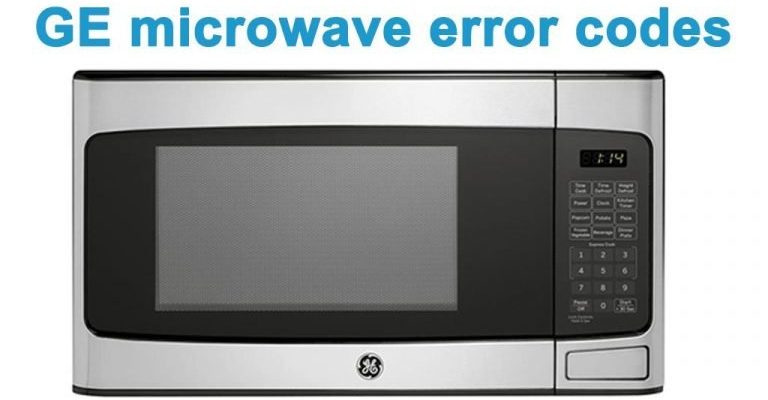
So, what does this error really mean? Picture your microwave as a kind of chef, busily preparing your food with precision. When it displays an error code, it’s like the chef raising a red flag, saying, “Hey, something’s not quite right here!” Specifically, the E3 error code on a GE microwave typically indicates an issue with the control board — the “brain” of your microwave that sends the right signals at the right times. Understanding this code can help you address the problem efficiently and, ideally, without too much stress.
Understanding the E3 Error Code
The E3 error code is basically your microwave’s way of saying it’s having trouble with communication. Think of it as a phone with a weak signal — the device is there, but it can’t quite connect to what it needs to get the job done. In a microwave, this usually refers to a problem with the control board’s ability to send or receive messages properly. If the control board is glitching, it might not be properly coordinating the microwave’s functions, like heating your food evenly.
You might be wondering how this control board issue comes to be. Well, microwaves, like all electronics, can experience wear and tear over time. Imagine the control board as a complex circuit that, much like a road system, requires clear paths to operate smoothly. Dust, power surges, or even old age can clog up these paths, leading to errors.
In some cases, you might notice odd behavior before the E3 code shows up, like uneven cooking or unexpected pauses. Consider these signs as whispers from your microwave, hinting at the need for a bit of TLC. Addressing the E3 error promptly can prevent further complications and extend the life of your trusty kitchen helper.
Diagnosing the E3 Error
When you see the E3 code on your GE microwave, the first thing to check is the control board. It’s like being a detective on the case of the malfunctioning microwave. The good news is that a lot of these checks are straightforward. You’ll want to unplug your microwave first, giving it a chance to reset. Think of it as giving it a nap to regroup.
Next, inspect the microwave’s interior. Sometimes, spills or food particles can sneak into crevices, much like sand in your shoes after a day at the beach. These can cause disruptions on the control board. Cleaning any visible debris might resolve the issue if the error was caused by something as simple as a short circuit.
If a quick reset and cleaning don’t help, it might be time to dig a little deeper. Check for visible signs of damage or wear on the control board itself. This is akin to checking the fuse box when your home’s power acts up. If you’re not comfortable doing this on your own, it’s perfectly okay to call in a professional. They can provide the assurance and expertise needed to assess whether the board needs repairing or replacing.
Resolving and Preventing the E3 Error
Once you’ve diagnosed the issue, the next step is resolution. If the problem stems from a faulty control board, you might need to replace it. It’s not unlike swapping out a malfunctioning part in a car — a necessary step to keep everything running smoothly. Ensure you get the right replacement board for your specific GE microwave model, as not all parts are interchangeable.
After replacing or repairing the board, you’ll want to take steps to prevent future errors. Regular maintenance can go a long way. Cleaning your microwave routinely and protecting it from power surges with a surge protector are small actions that can prevent big problems. Think of it like brushing and flossing for your microwave — it keeps things in tip-top shape.
In conclusion, while the E3 error code can initially seem daunting, understanding its causes and solutions can make handling it much less stressful. Armed with this knowledge, you’ll be better equipped to troubleshoot when your microwave seems to be speaking in code again. And remember, whether it’s resetting, cleaning, or getting a professional’s help, there are always steps you can take to ensure your microwave keeps serving you well.
